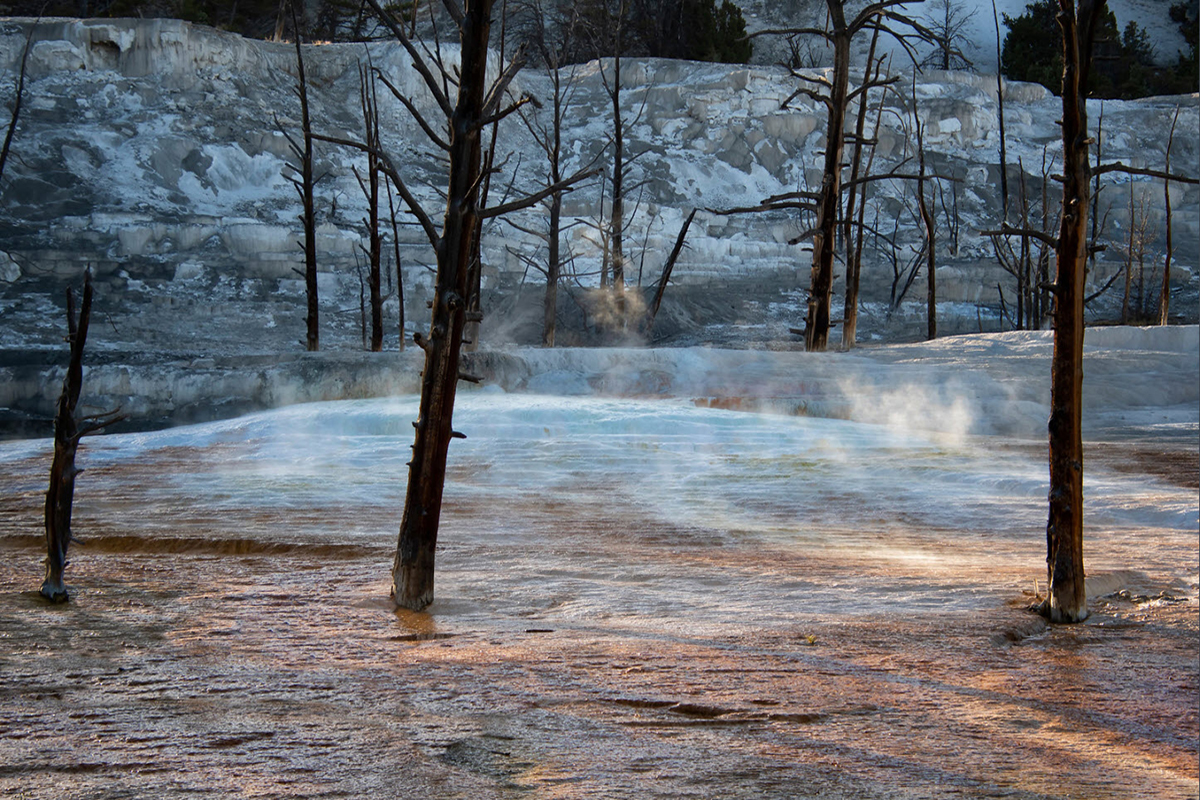Landscapes That Tell a Story
Jim Begley looks for the light, and a way to make each photo his own, with the versatile Tamron 18-400 VC HLD lens.
More Photo Tips | Video Gallery | Photo Gallery | Enewsletter sign-up
By Jenn Gidman
Images By Jim Begley
Jim Begley has traveled and led photo workshops all over the US and the world, from the national parks of the Southwest to the glacial terrain of Iceland. What he looks for when he's scanning the scenery: the best possible light and a way to make each image his own, even if he's taking it at a destination that's been visited by thousands of other photographers.
"If you've got terrific light, you can turn a so-so image into a fantastic one," he says. "I make sure that what I want to highlight in the photo is the sharpest and brightest part of the image, because that's what the viewer's eye will be drawn to. What I'm looking to do is make that photo unique, to make it mine, even if it turns out to be different than what I anticipated."
Keep reading for some of Jim's tips on how to create eye-catching landscapes with a versatile lens like the Tamron 18-400mm VC HLD lens, which he used on all of the photos you see here. "I fell in love with this lens the first time I used it," he says. "It offers me the flexibility to capture diverse photos from one scene in front of my camera, often from the same spot—important when you're vying for space at tourist attractions with other photographers. It's also light enough to carry around all day, and the Vibration Compensation feature helps keep my images sharp when I'm shooting handheld, which applies to most of these images here. It's the perfect travel lens."
Take a photo that makes your viewer think about the story behind it.
This is especially true for landscapes, which have often been through so much natural and man-made upheaval over the years. You want to make the viewers wonder how the scene before their eyes got the way it did.
Yellowstone National Park has some of the most intense geothermal activity in the world, including hot-spring activity underneath Yellowstone Lake. As soon as you see the Fishing Cone geyser shown here, located in the West Thumb Geyser Basin, you get the impression that something interesting is going on, or has happened. And it did: In the early 1900s, it used to have eruptions that went as high as 40 feet in the air. It doesn't do that anymore, thanks to water level and temperature changes over the last century—now it's just considered a hot spring. It's still compelling photographically, though, especially with that neat contrast of the different shades in the water, which was super-clear.
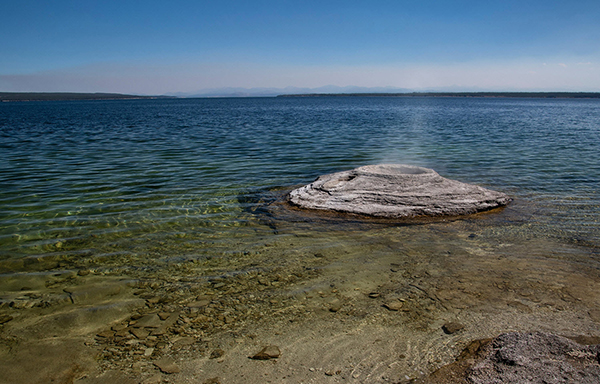
18mm, F/10, 1/320th sec., ISO 200
Click image to view larger
I also took this photo of the steam rising off the ground in a spot in Yellowstone not too far from the Fishing Cone. What attracted me to this scene, among other things, was the foreground, with those brown and reddish tones, contrasted with the cooler blue tones of the midground and background. But I also found myself wondering about those trees. Had a forest fire ripped through here recently? Years ago? Decades ago? With the trees as the focus, as well as the light hitting the steam, I'm able to convey some of that mystery to the viewer.
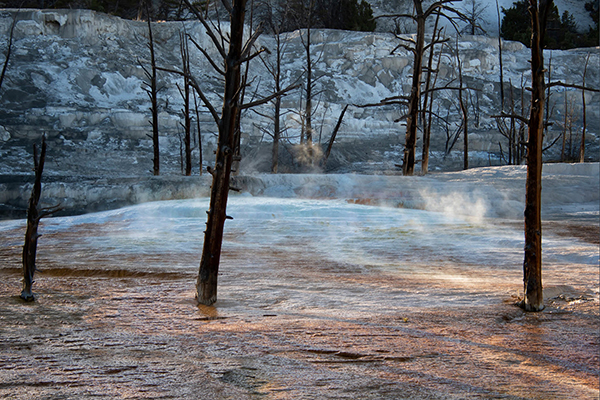
70mm, F/8, 1/400th sec., ISO 400
Click image to view larger
Use the foreground to your advantage to add depth to your images.
This second picture of burned trees was also taken in the Mammoth Hot Springs area, but this photo differs somewhat from the previous one in that I added a subtle amount of foreground in. When I first saw this scene, I thought it would make for a terrific black-and-white photo, but when I looked at the color version of it, I rather liked the blue sky reflected in the water, as well as the yellow of the grass in the foreground. Composing the photo that way also lends a distinct separation to the photo: You can clearly see a foreground, midground, and background.
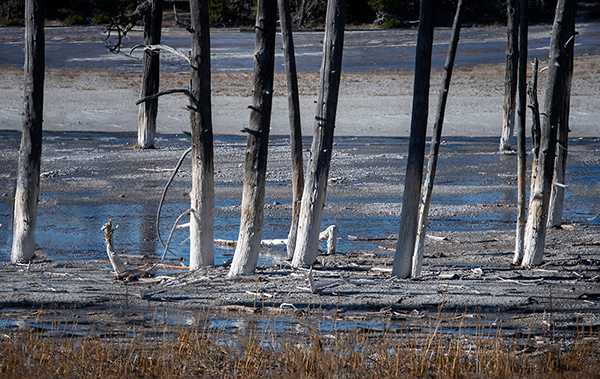
145mm, F/16, 1/160th sec., ISO 200
Click image to view larger
The same goes for my photo of Wild Goose Island, in Saint Mary Lake in Glacier National Park. I could've zoomed in just on the island, but I wanted to capture some of the greenery and the warmer colors of the fall foliage in the foreground to make the photo stand out a bit more. I was able to compose it so the island had separation from both that foreground and the shore in the distance. It really does look like an island unto itself.
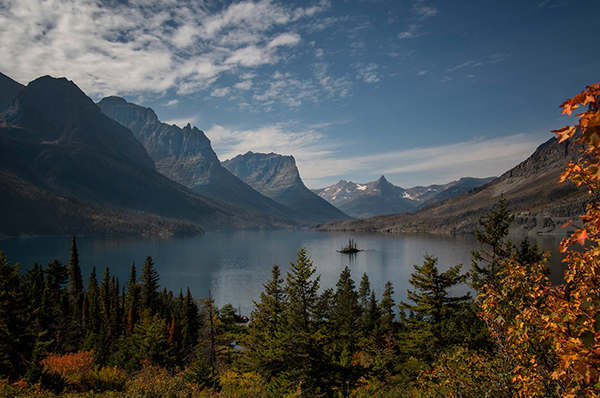
23mm, F/11, 1/800th sec., ISO 200
Click image to view larger
Don't get discouraged by bad weather forecasts—get ahead of it or wait it out.
Of course, not every storm or unending cloud front will break, no matter how long you wait. But more often than not, if you just have a little patience, you may end up with photos that no one else has because all of the other photographers ditched the scene.
Take this black-and-white photo I captured in the Grand Tetons. Even though I'd heard a storm was due to blow through, I got up early that morning and returned to this location, which we'd spotted coming in. With those snowcapped granite mountains against a solid-blue, cloudless sky, this scene seemed to me to be a perfect candidate to convert to a black and white—that way, I could take anything blue and make it darker, which in turn would make the mountains pop. All together, it made for a stunning reflection in the lake. Not 30 minutes after I fired off a bunch of photos, the storm came through and you could hardly see the mountains at all.
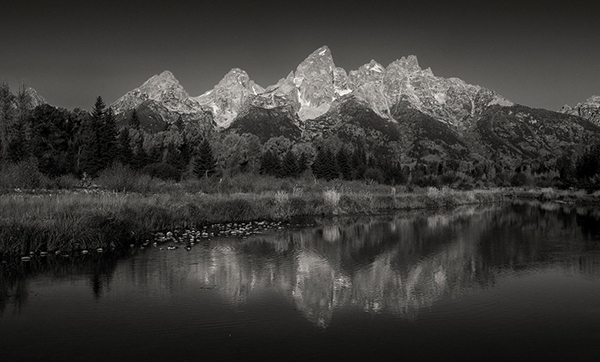
29mm, F/14, 1/200th sec., ISO 100
Click image to view larger
The opposite happened for this next image I took in the Swiftcurrent Lake/Grinnell Point section of Glacier National Park. We had stayed in a wonderful lodge right on the lake in the park, and when I woke up the morning I took this photo, the scene you're seeing here was completely fogged out. There was a misty rain, and you couldn't even see the mountain. We were due to leave that day, so I decided to go back to my room, pack up our things, and then head back outside to see if the clouds would break. After about a half-hour, they broke just enough for that light to cover the side of the mountain. The 18-400 gave me the ability to zoom in for the composition I wanted, and you can see from the detail in the image how sharp that lens is.
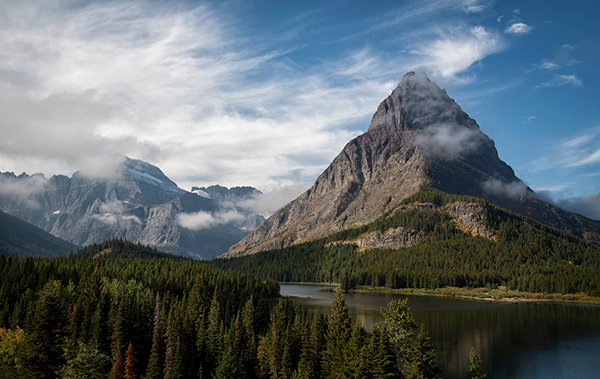
23mm, F/16, 1/160th sec., ISO 200
Click image to view larger
Shoot the same scene from as many different perspectives as you can.
When you're traveling, you may find yourself at a destination you'll never get to go back to again. That's why you have to take a variety of photos, to ensure you have an ample selection to choose from when you're looking later on for the best photos to showcase.
My wife was the one who actually spotted this river scene while we were driving in Glacier National Park on the way to Many Glacier. It has so many elements that make it an appealing visual: the S-curve of the river, the fluffy white clouds in a blue sky, the contrast of the green pines and other trees whose leaves were starting to change color for the fall. It all balances out so nicely. But I wasn't sure which composition would work best, so I went in tight, went wide, shot horizontally, shot vertically. The 18-400 offered me so much versatility in that regard. I finally settled on this vertical as my favorite.
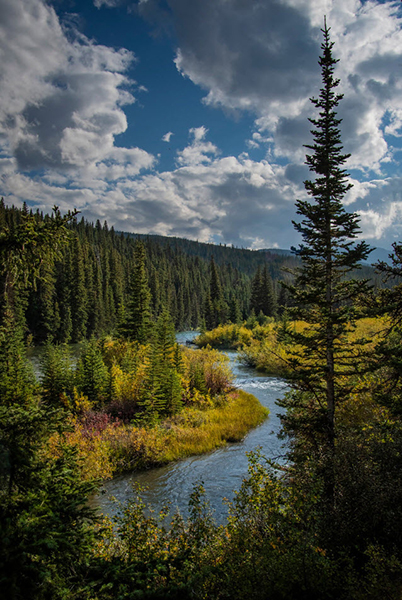
22mm, F/14, 1/800th sec., ISO 400
Click image to view larger
Mount Rushmore is a location we were really looking forward to seeing—not just because we're Americans and patriotic, but also because it's such an iconic location. When we went, it was very crowded, but the 18-400 gave me the extra reach I needed to capture a tight, crisp image. I'd taken several pictures of this scene, in less-than-ideal conditions, with various close-ups and wider shots, when we started to get ready to leave. As we were going, I happened to turn around and saw that the gray skies that were there when we arrived had started to break up. There were now swathes of warm light floating across some of the rock sections, plus a gorgeously moody sky. I'd almost walked away and missed this opportunity.
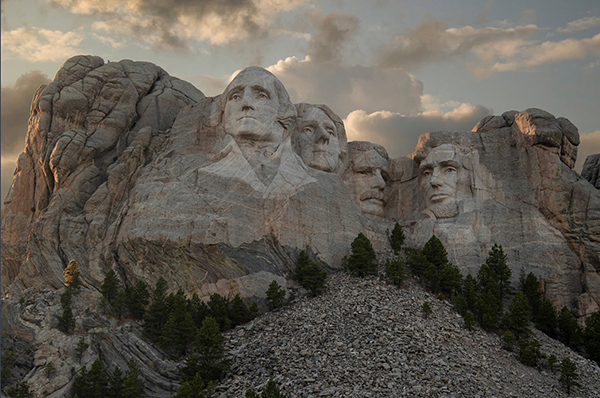
62mm, F/9, 1/320th sec., ISO 400
Click image to view larger
To see more of Jim Begley's work, go to www.wowphotoshdr.com.
More Photo Tips | Watch Videos | Learn More About Tamron Lenses | Photo Gallery
